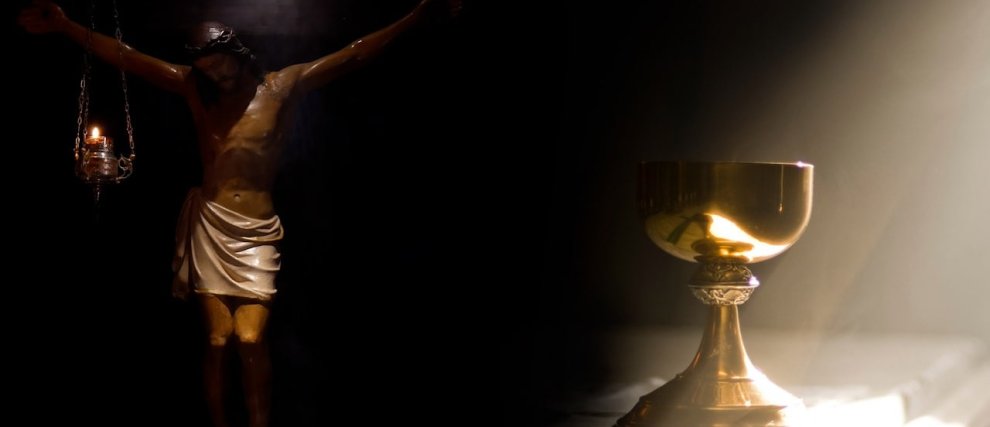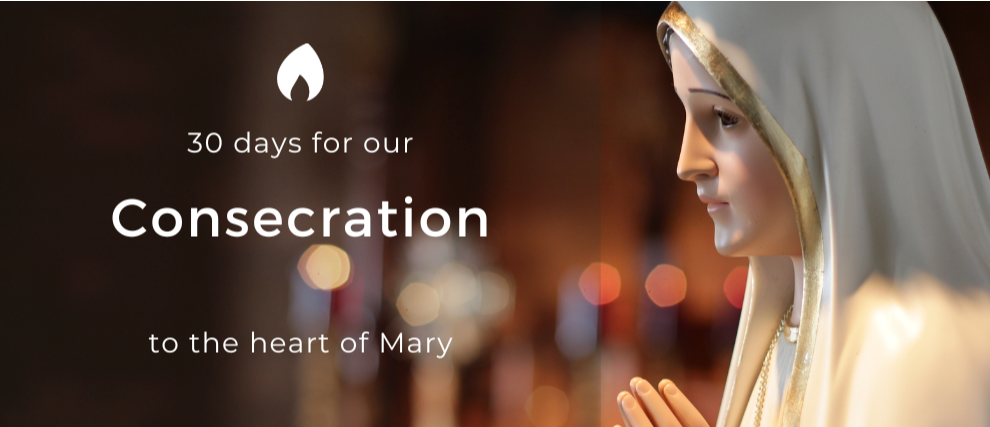The Way of the Cross
A few days before the feast of Easter, on Good Friday, the Christian faithful are invited to relive Christ's journey to Golgotha: this is the Way of the Cross. Taking place most often at 3 p.m. and divided into 14 stations, the Way of the Cross commemorates the last hours of Christ's life, offered to redeem us from our sins.
Discover the meaning and Christian meaning of the Way of the Cross and learn what the 14 Stations of the Way of the Cross are!
Meaning and Christian Importance of the Way of the Cross
What is the Way of the Cross?
For Christians, the Way of the Cross refers to Jesus' journey to the place of his crucifixion. Indeed, before his death, Jesus had to carry his heavy cross to the top of Mount Golgotha, which caused him great suffering.
For the Catholic Church, the Way of the Cross evokes the ceremony that takes place in memory of this journey of Christ. It takes place mainly on Good Friday, when the faithful commemorate the Passion of Christ, but it is also frequent on Lenten Fridays, or during the rest of the liturgical year. When a "Way of the Cross" is mentioned, it can also refer to all the material symbols marking the stations - the crucifixes or icons placed in the churches - or the crosses of Calvary that are encountered on the country roads. The expression "way of the cross" has also been used to designate a difficult test of life.
The Way of the Cross often takes place during a walk or procession, in a church or in a place that replicates the climb to Calvary. It can be carried out in groups, as part of pilgrimages or within religious communities, or privately. The journey of Christ is evoked in fourteen particular moments, called "stations", which are recounted in the Gospels or which derive from the Christian tradition. At each station, a meditation is brought, as well as prayers that take place in front of paintings, crucifixes or other forms of representation.
Christian Meaning of the Way of the Cross
For the faithful, making a Way of the Cross is an act of commemoration of the Passion of Christ: the Church invites us to follow Jesus by uniting ourselves intimately to his sufferings during a spiritual "pilgrimage" marked by three aspects: walking, prayer and meditation.
Indeed, the faithful are called to walk in the footsteps of Christ, to let themselves be led on the path that he offers by truly making themselves his disciples! Then, through the meditation of each trial of his Way of the Cross, the pilgrims remember the sufferings that Christ endured for us and thus contemplate the great mystery of the love of God, as he gives his son Jesus to redeem us from death and sin. Finally, through prayer, everyone can offer the sufferings of their own life: their trials, their disappointments, so that Christ will come to transfigure our lives through his Paschal Mystery!
To realize a Way of the Cross is to recognize the infinite love of God for us, it is to accept to follow Jesus and to recognize him as our Savior! This is also an act of penance by recognizing yourself as a sinner and imploring God's forgiveness and mercy. Finally, we must not forget that this approach is already part of the joy of the feast of Easter, which marks the summit of all Christian life: the Passion and death of Christ only make sense through his glorious Resurrection!
The 14 Meditated Stations of the Way of the Cross
The Way of the Cross is divided into 14 stations, that is to say 14 moments marking Jesus' journey, as he made his way to the place of his ordeal. Here they are:
Station 1: "Jesus is condemned to death"
“Lord, you were insulted by the crowd from whom you had healed the sick. You were condemned by a man, a man like us, one of your creatures, condemned when you were innocent. You, the only pure, the only true, the only saint, a guilty man, a sinner, judged you. You stayed quiet and gentle.”
Station 2: "Jesus is given his Cross"
“Lord, we present to you the Cross, this Cross that you have always waited for. It is to her that you thought when you were in the middle of your apostles, it is to her that you went when you went up to Jerusalem. You seized it as the tool of our redemption.”
Station 3: "Jesus falls for the first time"
“Lord, the Cross weighs heavily on your shoulders already plowed with hard furrows, eaten away by flogging. You are tired, exhausted, you hit the stones of the path and you fall with the Cross. Teach us to accept failures and humiliations.”
Station 4: "Jesus meets his Mother"
“Your mother's here, Lord. She does not cry her suffering, but she mingles her tears with your tears. She doesn't get in the way, but she follows you. She unites with you. She is buying us back with you.”
Station 5: "Simon of Cyrene helps Jesus"
“Lord, you wanted to be helped. It is not that you cannot finish your Passion yourself, but you want us to do our part of the work, and add it to yours. You do us the honor of wanting us for the salvation of the world.”
Station 6: "A woman wipes the face of Jesus"
“Among this agitated crowd, a woman comes forward, she wipes your face, and your pure features reappear. Around us, the world does not know you, but it can only know you through Christians. It is we who give you, too often, a false image.”
Station 7: "Jesus falls for the second time"
"Again, Jesus fell. Lord, you wanted to fall to teach us that, despite our falls, you still love us and that we must never be discouraged.”
Station 8: "Jesus speaks to the women of Jerusalem"
“The women of Jerusalem lament in the face of suffering. They do not know that your sufferings are the sufferings of all the little ones, of all the defeated of life, of those who are despised, of those who are oppressed. They do not see the sin of the world.”
Station 9: "Jesus falls for the third time"
“Another time, a third time, you fell on the road. Through all the centuries, your eyes discover those who will not benefit from your blood, all the closed hearts and those who will be driven away from you by the misery or malice of others, those who will not understand your proof of love.”
Station 10: "Jesus is stripped of his clothes"
“Lord, you were naked on the straw. You are again stripped of everything to die. You have nothing left, since your clothes are drawn. With what force do you not cry out to us to love poverty!”
Station 11: "Jesus is nailed to his Cross"
"You lie on the Cross and are attached to it with nails. You give your whole body, all your limbs. You give your freedom. Lord, what an example, and what a proof of love!”
Station 12: "Jesus died on his Cross"
“There is no greater proof of love than giving your life for those you love. You said it, Lord, and you do it to the end, to the extreme limit of suffering. You love us until death.”
Station 13: "Jesus is detached from the cross and given to his Mother"
"We detach Him from the cross. We give Him to his mother. The Son and the Mother are there. There is now only one pain, that of Mary, who must continue the redemption. It is the link between that of Jesus and that of the world.”
Station 14: "Jesus is buried"
"Christ is buried in the tomb. We will die one day, but it will be to live. In the meantime, if we have to suffer, sometimes fail, be defeated in appearance, we will know the value of our suffering, the meaning of our failures, the truth about our fate. The dead Christ will rise again.”
A fifteenth station is sometimes added: it represents the empty tomb and thus symbolizes the Resurrection of Christ. This last station thus emphasizes the victory of Jesus over death and connects each of the stations to the Paschal Mystery, inseparable from the Passion of Jesus!
Praying with Hozana!
Good Friday is the day when Jesus gives his life as a ransom for all! Let us look at the one who was "raised" for us on the cross, let us adore him for us and for all humanity! With Hozana, pray and meditate on Good Friday thanks to the beautiful communities of prayer offered:
- with Saint John Henry Newman
- with guided readings on the Way of the Cross

